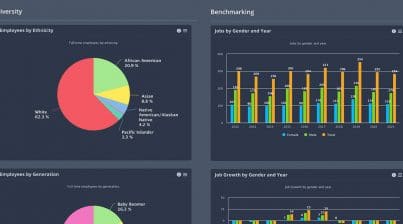When the COVID-19 pandemic started in 2020, we all learned to adapt and get our work done under difficult circumstances. Big office complexes closed, workers converted spare bedrooms to makeshift offices, and Zoom meetings became a daily event. But now, it’s 2022 and remote teams are commonplace in companies of every size.
With today’s technology and cloud computing, people can work from their bedroom or from Bali with an internet connection. So after COVID-19 lockdowns ended, many companies re-opened under a hybrid model of employees reporting to the office and some days working remotely.
Remote work has become wildly popular in the past two years. FlexJobs conducted a survey and found that 65 percent of remote workers don’t want to have to work in an office. And for those that do go into the office, the study found that 33 percent want to work hybrid, meaning only a few days a week in a traditional office setting.
With this new workforce landscape came some new challenges. How do you effectively manage remote teams? It’s information that every manager is looking for.
Have An Action Plan for Remote Team Management
First things first – if the adage “what gets measured, gets done” is true, then it’s wise to implement systems to track work from your remote teams. For example, it’s a good idea to track which team members are working remotely vs. in the office and how many hours per week are spent in each place. Then, if there is a performance issue, that data will help managers see the big picture.
It’s crucial to set specific goals with your team. Work together to plan expectations, and give a game plan for how the week will be structured. A common method is to have one weekly “catch-all” video meeting to sync up with the employees.
Suppose you don’t already use one, set up a project management tool that can be accessed remotely, to keep workers in a central location and collaborate in real-time. Most will have tasks assigned and employees will see where projects stand. One of the best inventions that cut back on email threads a mile long is an instant messaging system, which many project management software has built-in.
Extra Extra Communication
As a manager of a remote workforce, a big part of your job will be to compensate for the lack of in-person interaction. Working remotely means colleagues won’t see each other in the break room or wait for the elevator together. Instead, it’s often those chance run-ins and impromptu conversations that spark ideas and collaboration.
It’s better to err on the side of caution and over-communicate with staff. Check-in on them, ask how work is going, and how they feel about their role and the company.
Create an Online “Water Cooler”
Sometimes known as the “random” message thread on project management sites like Asana and Slack, this creates a sense of camaraderie and belonging among team members.
Another tool is to use breakout rooms on Zoom so workers can have more one-on-one time with colleagues. More tips on virtual
Some companies also encourage employees who live in the same cities to visit each other in person for coffee or lunch, providing credit with delivery services like DoorDash or GrubHub.
Plan Events, Even If They Are Virtual
Kerry Wekelo, chief operating officer of culture at Actualize Consulting, said she creates events for her teams like cocktail-mixing classes and comedy improv nights. She takes the step of asking employees what they would enjoy, rather than planning blindly.
“I sent out a survey asking ‘What are you most interested in?’ and wellness was at the top,” Wekelo said on a recent podcast. The company also sponsors an annual retreat.
Beware of Email and Chat Overload
With remote teams, there is a temptation to work around the clock. This can lead to burnout which in turn leads to lower productivity. That leads to employee exodus, which no one wants.
Be mindful of your team members’ time and discourage anyone you see is taking personal time to work. It’s not healthy for workers or the company.
You can set hard stop parameters and discourage your team from checking emails or logging in during the weekends, for example. However, downtime is necessary and the work and home lines are blurred when your team is remote.
Lead With Empathy
Some workers will thrive in a remote setting, while others will face tremendous difficulty. Empathy is a term we constantly hear in human resources and management. Workers are the heart of the business, so leaders need to be mindful of their needs and treat them as well as they treat valued customers: with respect and a willingness to serve.
Focus on Flexibility
Flexibility is one of the top attributes job seekers name as a top priority. The COVID19 pandemic forced managers to be flexible, as scores of employees were working from home and helping their quarantined children simultaneously. As the restrictions ease and children are settled in school again, parents found that flexibility was a quality they did not want to live without. Life happens. An employer who understands when you need to change plans or miss a meeting will earn the loyalty of their staff.
Utilize the Best HR Tech to Manage Virtual Teams
One element of managing a remote workforce is that your HR technology has to be user-friendly and easy to learn. This can be achieved through training or peer-led workshops on remote working tools. Nothing deflates the spirit faster than a worker sharing ideas in a video call only to be assaulted with cries of “Unmute yourself!” from a sea of faces.
If your team utilizes Google’s suite of office tools, make sure they are up to date on how to work the various features so teams can collaborate easily. For even more, see this productivity toolkit for remote workers.
Measuring the Happiness of Your Workforce
For Wekelo, of Actualize, there was no transition to hybrid work because that is how the company generally operated for her entire tenure of 16 years. But she said it is crucial to gather data on your staff’s feeling of value and purpose within the organization.
Asked how she measured employee satisfaction at Actualize, Wekelo said she started to examine the turnover rate. She said she realized the organization had a problem when she saw turnover was at 33 percent. More recently, that rate is at 4 percent. In addition, she keeps data on the average tenure of team members. Actualize has also won awards such as Top Company Culture by Entrepreneur Magazine and Top Workplace from the Washington Post. The awards are given based on survey data.
“All of those surveys are for our employees,” she said. “So we would not get that rating if they weren’t happy. That, for me, is a huge, huge, testament.”
Your HR metrics don’t have to be a pain to manage. The solution is a dashboard to help you manage all your metrics in one place. It will automatically pull in the data from your various HR systems and display your metrics with impactful visualizations. Sign up today for a free demo of our HR analytics dashboard software.












